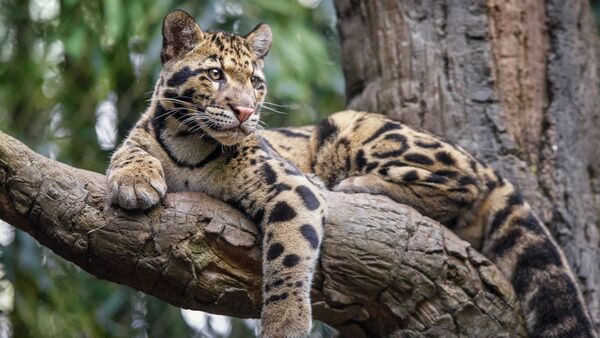Borneo, the third-largest island in the world, is a treasure trove of biodiversity, renowned for its unique wildlife and expansive rainforests. With its rich ecosystems and endemic species, Borneo provides a captivating glimpse into the natural world. This article delves into some remarkable aspects of Borneo's wildlife.
Borneo's rainforests are among the oldest on Earth, estimated to be over 140 million years old. This ancient ecosystem hosts an incredible array of species, including:
15,000 plant species: Many are unique to Borneo, providing vital habitats and resources.
420 bird species: Notable species include the Bornean bristlehead and the rhinoceros hornbill, both of which contribute to the island's vibrant avian diversity.
220 mammal species: The island is home to some of the world’s most extraordinary mammals, from the majestic Bornean orangutan to the elusive clouded leopard.

The Bornean orangutan is one of the island's most iconic inhabitants. These critically endangered primates are known for their reddish-brown fur and remarkable intelligence. They spend most of their lives in trees, using their long arms to swing between branches. Conservation efforts are essential for their survival, as habitat destruction due to logging and agriculture poses a significant threat.

Known for its distinctive large nose, the proboscis monkey is native to Borneo and can often be spotted near rivers and mangroves. These social creatures live in groups led by a dominant male and communicate with a range of vocalizations. Their diet primarily consists of leaves and fruits, and they play a crucial role in seed dispersal within their habitat.
Borneo's coastal waters are teeming with marine biodiversity. The coral reefs surrounding the island are home to a variety of fish species, sea turtles, and even the elusive dugong. Notably, Sipadan Island is celebrated as a premier diving destination, offering breathtaking underwater experiences with vibrant coral gardens and abundant marine life.

The Borneo pygmy elephant is the smallest subspecies of the Asian elephant and is unique to the island. These gentle giants are characterized by their smaller stature and rounder ears compared to their mainland counterparts. Conservation efforts are crucial for their survival, as their populations are threatened by habitat loss and fragmentation.
Borneo’s rainforests are home to extraordinary plant species, including:
Rafflesia arnoldii: This parasitic plant produces the largest individual flower in the world, which can reach up to three feet in diameter. Known for its foul odor, it attracts pollinators such as carrion flies.
Dipterocarp trees: These towering trees dominate Borneo’s forests and are vital for maintaining the ecosystem, providing habitat for countless species.
Borneo is a refuge for several critically endangered species, including:
Sumatran rhinoceros: The smallest rhino species, it faces severe threats from poaching and habitat loss.

Bornean clouded leopard: Known for its beautiful coat and elusive nature, this big cat is an apex predator that plays a vital role in maintaining the ecological balance.

Borneo's nightlife reveals a hidden world of fascinating creatures. Many species, such as the slow loris, various bats, and the Malay civet, are nocturnal. Guided night tours provide opportunities to observe these elusive animals in their natural habitats, highlighting the importance of nocturnal ecosystems.
Numerous organizations are committed to protecting Borneo’s wildlife and ecosystems. Initiatives include:
Protected areas: National parks and wildlife reserves are established to safeguard critical habitats.
Reforestation projects: Efforts to restore degraded areas help to enhance biodiversity and support local wildlife.
Community involvement: Engaging local communities in conservation efforts fosters sustainable practices and helps mitigate human-wildlife conflicts.
Borneo is home to diverse indigenous cultures, including the Iban, Dayak, and Kadazan-Dusun peoples. These communities have deep-rooted connections to the land and its wildlife, often practicing traditional ecological knowledge that promotes sustainable living. Their cultural practices and beliefs often emphasize the importance of preserving the environment for future generations.
Borneo’s wildlife is a testament to the planet’s rich biodiversity and the urgent need for conservation efforts. With its unique species, breathtaking landscapes, and vibrant cultures, Borneo stands as a critical area for wildlife preservation and serves as an inspiration for global conservation initiatives. Protecting Borneo is not just about saving individual species; it’s about preserving an entire ecosystem that is vital to our planet's health.
animal tags: Sumatran-rhinoceros
We created this article in conjunction with AI technology, then made sure it was fact-checked and edited by a Animals Top editor.